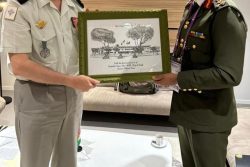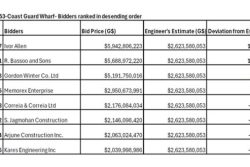Dear Editor,
Certainly, within the extended Georgetown, particularly Kitty North Central and Southern sections, it would be extremely difficult if not impossible to flag a more partinost and stalwart of the People’s Progressive Party than Prabhu Dial Sattan. His affiliation with the political process would have been determined by the socio-political realities of the early 1960s; a period dubbed as the “Troubles” by some and Guyana’s “Civil War” by others. It may also be correct to situate his association with the Guiana Hindu Sanatan Dharma organisation that was founded by the late Reepu Daman Persaud. However, the spiritual and Hindu identities were sustained internally to a historical environment specific to Kitty as an extension of Georgetown, that retained elements of national cohesion forged by the 1950s PPP, and demonstrated by the supra-majority election victory of 1953.
It is also possible that Prabhu’s seniors including his paternal head of family, always believed that the Burnham PNC would have to accept the reality of the people’s franchise. And difficult as that process was to become, somehow there was a realization that Dr. Jagan’s sincerity, his belief in the unity of the working class, and ultimately, his dedication to the oppressed would provide an alternative to ethnic as well as class polarisation as these trends impacted upon the lives of ordinary folks. Another factor that could be examined is that of Gandhian peaceful political campaigns as this formulation would be applicable to then colonial British Guiana. Subjectively at least, Gandhi’s ideas had a generational influence throughout the former English colonial territories, especially during the immediate post WWII years leading to India’s independence.
These are important strands that must be recognised, when extracting a balanced perspective relative to an activist such as Prabhu, the ‘Thomas Street comrade’. At another yet significant level would be the communal type environment of Kitty bound to the west by Vlissengen Road, Barr Street, and the Barr Street access to the Lamaha artery. Local historians Rose and Moore have alluded and specified the critical role of the ‘Fear’ factor in the period characterised by the CIA (through their local agents) campaign to overthrow and displace the Jagan PPP commencing from the 80-days strike, and anti-Kaldor budget demonstrations.
The role that Prabhu Sattan would have played in this process, that of a committee group member tasked with local organization – mounting of platforms, streaming of flags and banners, as well as some level of security -, would be complex to unravel without a collective input of others who collaborated with party mobilisation over the decades. Nevertheless, one thing is certain. Comrade Prabhu’s intimate familiarity with the problems confronted by grassroots, his perception of diversity as manifest in location (i.e., street corners), as well as scheduling of meetings in terms of political events not “clashing” with public holidays; or any other major cultural or sports activity within given boundaries or constituencies, was a real time value. It was in this area of grassroots experiences that Prabhu Sattan was proficient.
Additionally, it must be recalled that the Kitty ward (at that time) or later comprised of a neighbourhood viewed as a virtual ‘heirloom’ for LFS Burnham. Burnham grew up in the northern-most sector termed Subryanville/Kitty, and this contiguity impacted across ethnicities. Similar perhaps to the Charlestown ward and the municipal support for Janet Jagan in the 1950s. In the post WWII decades, up until the late 1960s (and even somewhat more), Kitty and Bel Air were considered at best semi-rural in terms of social amenities linked directly and otherwise to the East Coast railway. Kitty being the first station/stop out of Georgetown. Coupled to the open municipal market were micro-grocery outlets as well as bovine and ruminants rearing. Prabhu himself could often be seen, during the 1970s, herding three or more heifers along the road after these had been taken to graze.
As he matured Prabhu practically became a spokesperson for almost the entire North Kitty/Subryanville/Prashad Nagar and Lama Avenue location as well as Section “K” and Campbellville. Essentially, this would have been derivative from his other engagements discussed above. However, he became a PPP Councillor serving on the Georgetown City Council for a number of years – a reflection of the high level of local knowledge he had accumulated for a considerable period of time. As was confirmed at the Freedom House tribute recently, Prabhu not only was a close collaborator with PPP elections committee chairperson Gail Teixeira, but also with other stalwarts. These would include Kemraj Rai and Ronald “Ronnie” Nawbatt, both managers of the Basic Needs/SIMAP during the 1990s, as well as with the ‘agency’ tasked with supporting farmers under the authority of then Minister Housing and Water, Irfaan Ali.
Last week, travelling through the Kitty community – Alexander to Pike and David Streets – where a more variegated cluster of small businesses have evolved, one was struck by the feedback from ordinary folk. And why? The sense of loss, alienation even from the essentialism of human mortality was very evident. Unlike Burnham who claimed that “another rasta” would replace him, the same cannot be said of Prabhu Sattan the militant and at occasions controversial PPP man with an attitude.
Sincerely,
Eddi Rodney






